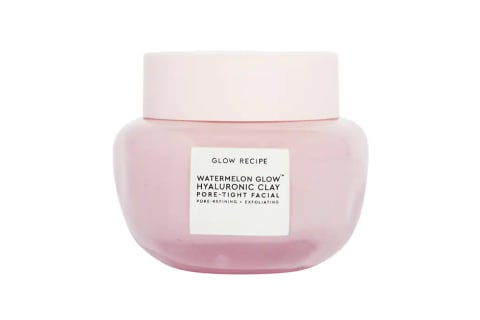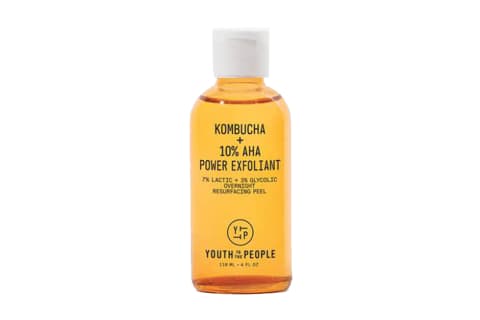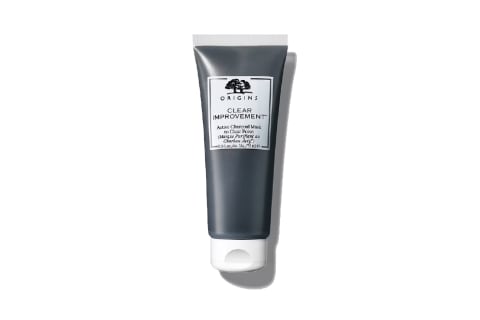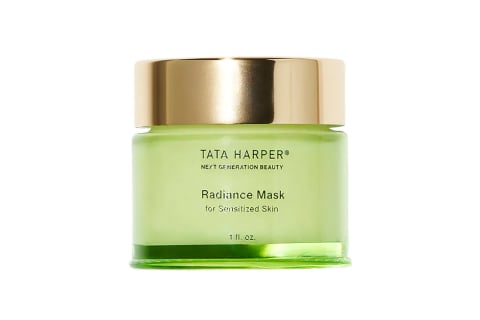That being said, some folks are more prone to blackheads than others. And clearing out clogged pores before they turn into full-fledged breakouts is one of the best ways to manage acne. There are more than a few ways to do this, so we’re going to break down the most effective options below. Let’s dive in. Because sebum is a sticky consistency, it easily clings to dirt and bacteria as well. When this clog is exposed to oxygen, it takes on a darker color—which is what makes blackheads different from non-exposed clogged pores. Clogged pores can sit flat on the skin or become raised, depending on how clogged they are. These clogs may turn into larger pimples such as pustules or papules—you can read more about those here. So before you try to use every exfoliating serum and extracting tool on the market in an effort to try to shrink your pores down to none, remember that they’re completely normal. What’s more, you’re probably just hyperfixating on your skin. Sitting in front of a magnified mirror for an hour trying to figure out how you can eliminate the look of real skin and achieve a flawless complexion isn’t going to help you achieve something impossible. Not to mention, it’s not good for your mental health. And if you’re getting wound up over whether or not your pores are clogged and how to fix it ASAP, remember that stress is one thing that actually can lead to breakouts—so take a deep breath for the sake of sanity and your skin. “You shouldn’t squeeze clogged pores, as often this can lead to more inflammation, scarring, and risk of infection,” board-certified dermatologist Marisa Garshick, M.D., FAAD, tells mbg. So before you get out your tools, remember that the chances of your clogged pores getting worse are higher than the chance of a quick squeeze doing any good. Instead, opt for one of the following methods: But they’re not just good for post-clog treatment. BHAs are classified as chemical exfoliants, meaning they help to slough off dead skin cells and, in turn, prevent clogged pores simultaneously. Not sure how to remember which acid does what? “You can think of it this way: AHAs work above (A for AHA and Above) the surface of the skin, whereas BHAs work below it (B for BHA and Below),” medical esthetician and founder of JTAV Clinical Skincare Joie Tavernise explains. You don’t have to choose one or the other. In fact, using an exfoliating serum with a combination of the two acids is the most efficient way to keep the pores clear and maintain a smooth, dewy complexion at the same time. Caveat: However, be sure not to mix two separate serums together. Look for a pre-formulated combination serum instead. However, these masks aren’t for everyone. “They can be very drying, so it’s best to limit using them to a few times per week, and they should also be used in caution in those with dry skin types,” Garlapti adds. If you’re going to use raw clay powder, be sure to mix it with a hydrating, noncomedogenic oil like jojoba, rosehip, or grapeseed oil to prevent drying out the skin. And if you have dry or sensitive skin to begin with, opt for other remedies altogether. What’s more, “It also helps to normalize the sebaceous gland and regulate its secretions,” Marcus says. So if your skin is on the oilier side, using a retinol serum or cream can help to regulate your oil production over time and prevent buildup. Even when it comes to pore size, retinol can help make the pores appear smaller (though larger pores aren’t anything to worry about). Garlapti explains, “[Retinol] decreases inflammation and increases collagen production, which helps to strengthen the walls of pores, making them appear smaller over time.” So if you’re dealing with clogged pores more often than not, you may consider an acne facial. Beyond just extractions, acne facials also include topical treatments with ingredients like salicylic acid, benzoyl peroxide, tea tree oil, etc. Acne facials may even include a blue light therapy session, which can help to kill bacteria, regulate sebum production, and soothe the skin. You can read all about these facials here if you want to learn more. “Physical exfoliation offers instant gratification, as dead skin cells and dirt are swept away during the treatment,” board-certified dermatologist Jessie Cheung, M.D., founder of Cheung Aesthetics and Wellness previously told mbg. If you’re going to take this route, look for gentle exfoliants with fine, sugarlike granules rather than harsh salt scrubs or those with large beads made from nut shells or plastic. This will help prevent over-exfoliation, irritation, and redness. “Enzymes can exfoliate and help to get rid of dead skin cells and in doing so, can help to improve the appearance of clogged pores and congestion of the skin,” Garshick explains. What’s more, “They can also act as a keratolytic, breaking down keratin and helping clear away dead skin cells from the surface of the skin,” Marcus explains. While these patches may be beneficial to temporarily improve the appearance of the pores, they don’t necessarily prevent new breakouts from forming, Garshick adds. Hydrocolloid patches are certainly a better choice than typical black strips as the latter can damage your skin barrier—more on that to come. Dermatologists and licensed estheticians can offer extractions, chemical peels, and prescription-grade products, all of which can be helpful for chronically clogged pores. Plus, these experts can help you put together an A+ routine for keeping your skin clear after in-office treatments. When the skin barrier is compromised, your skin is more susceptible to bacteria and your oil production will be thrown off. Stick with the options above and skip the abrasive blackhead strips. Or make your own pore strips at home—here’s how.






